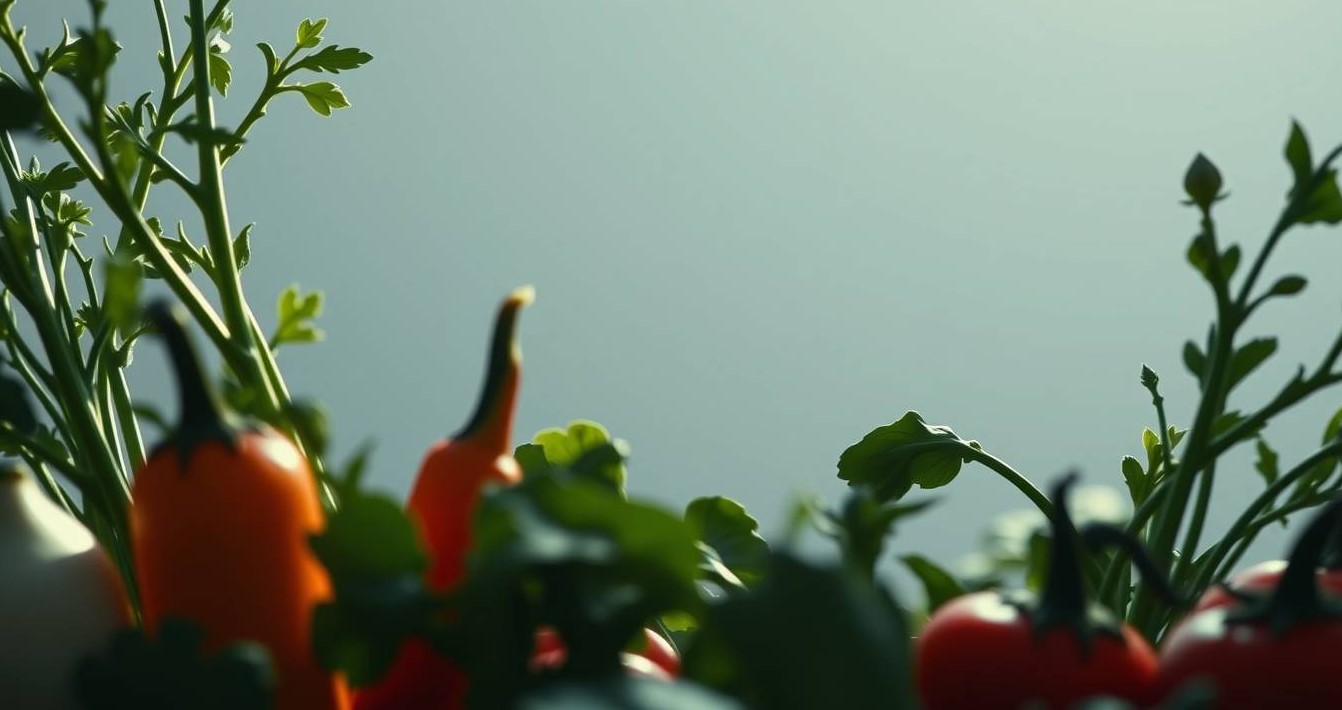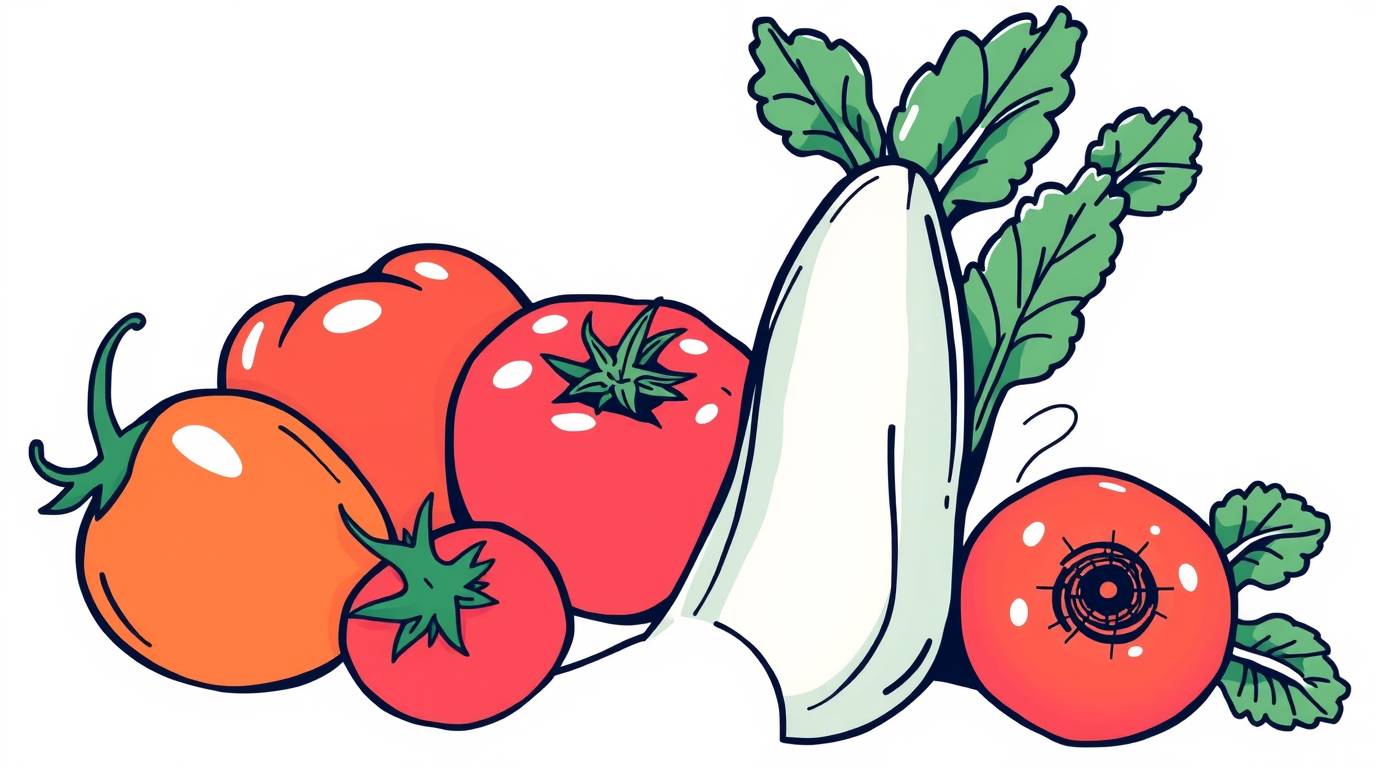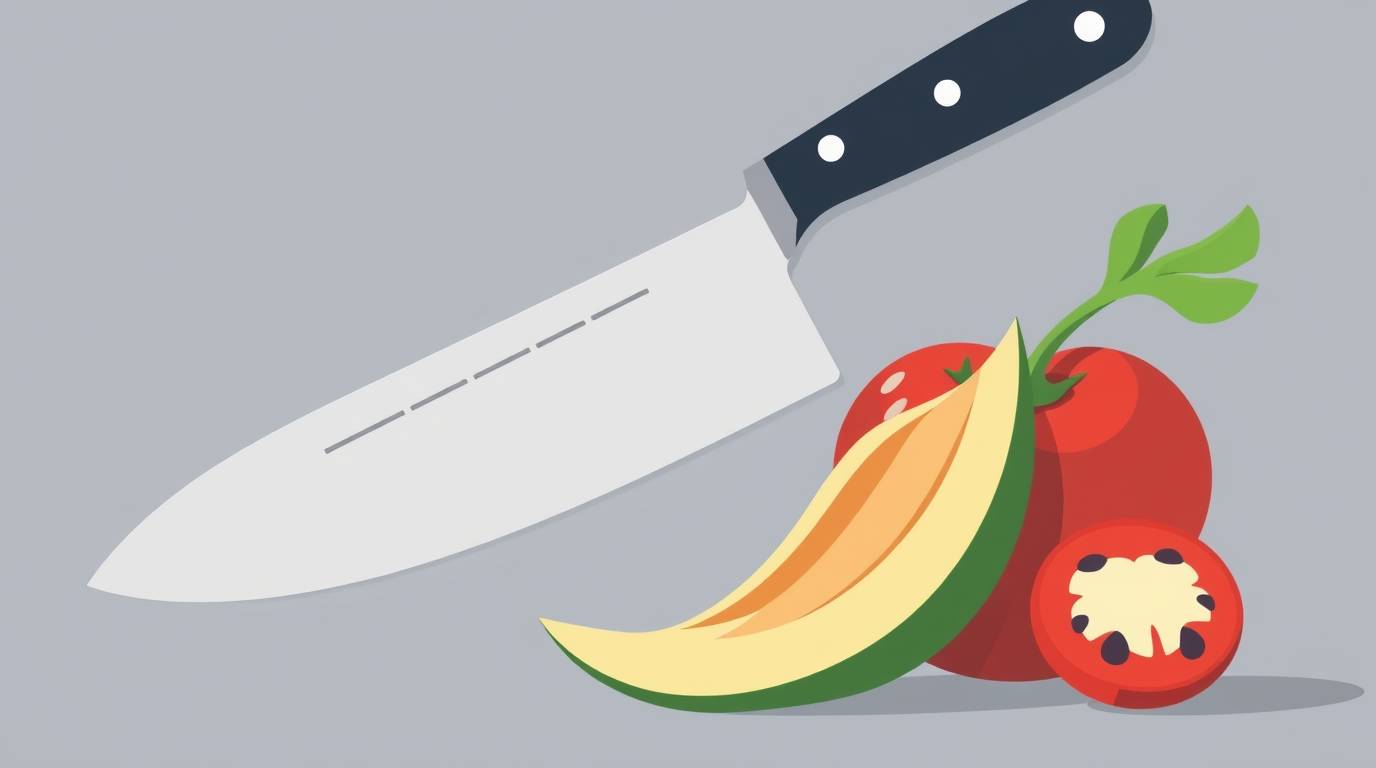Table of Contents
Introduction: The Value of Preservation
How much food do you throw away each week? If you're like the average American household, it's probably around 30-40% of what you buy. That's not just money in the trash—it's also a waste of the resources used to grow, transport, and package that food.
Food preservation is more than just a quaint hobby or something your grandparents did out of necessity. In our modern world of food abundance and environmental concerns, knowing how to extend the life of your ingredients is a valuable skill that:
- Saves money by reducing food waste
- Reduces environmental impact by using more of what you grow or buy
- Captures peak-season flavors to enjoy year-round
- Builds resilience against supply chain disruptions
- Connects you to culinary traditions and techniques
Whether you're dealing with a bumper crop from your garden, trying to make the most of bulk purchases, or simply wanting to reduce weekly food waste, this guide will walk you through practical preservation methods for every kitchen and skill level.
From simple refrigeration tricks that can double the life of your produce to more advanced techniques like fermentation and canning, you'll learn how each method works, what equipment you need, which foods are best suited for each technique, and critical safety considerations to keep in mind.
Ready to start preserving? Let's dive in!
Refrigeration: Beyond the Basics
We all use refrigeration daily, but few of us optimize this preservation method. Proper refrigeration can significantly extend the life of your fresh ingredients.
Temperature Zones in Your Refrigerator
Your refrigerator has different temperature zones that should be used strategically:
- Lowest shelf (32-34°F/0-1°C): Ideal for raw meat, fish, and poultry
- Middle shelves (35-38°F/1.6-3.3°C): Best for dairy, eggs, and cooked foods
- Higher shelves (38-40°F/3.3-4.4°C): Good for leftovers and ready-to-eat foods
- Door (40-42°F/4.4-5.5°C): Best for condiments and juices, not milk or eggs
- Crisper drawers: Usually adjustable for different humidity levels
Humidity Management
Understanding humidity needs can double the life of your produce:
- High-humidity drawer (most vegetables): Leafy greens, broccoli, carrots, cucumbers
- Low-humidity drawer (most fruits): Apples, pears, stone fruits, melons
Pro tip: Many produce items emit ethylene gas, which speeds ripening and can lead to faster spoilage. Keep ethylene producers (apples, bananas, avocados, peaches) away from ethylene-sensitive items (broccoli, cucumbers, leafy greens).
Proper Food Storage Containers
The right containers make a significant difference:
- Glass containers: Ideal for leftovers and prepared foods, don't absorb odors
- Specialized produce containers: With vents to control humidity
- Cheese paper/bags: Allow cheese to breathe while maintaining humidity
- Herb savers: Extended life for fresh herbs
Refrigeration Hacks for Common Ingredients
Herbs:
- Wash and dry thoroughly
- For hardy herbs (rosemary, thyme): Wrap in damp paper towel, place in open bag
- For soft herbs (cilantro, parsley): Trim stems, place in water like flowers, cover loosely with plastic bag
Berries:
- Don't wash until ready to use
- Store in container lined with paper towels
- Keep separated to prevent crushing
Greens:
- Wash and spin dry thoroughly
- Wrap in paper towels or clean kitchen towels
- Store in partially open plastic bag
Freezing: The Modern Preservation Workhorse
Freezing is perhaps the most accessible preservation method for modern home cooks, requiring minimal equipment while effectively extending shelf life from days to months.
How Freezing Preserves Food
Freezing works by:
- Slowing bacterial growth (bacteria don't die but become dormant)
- Reducing enzyme activity that causes deterioration
- Stopping most chemical reactions that lead to spoilage
Freezer-Friendly Foods vs. Poor Freezer Candidates
Freeze with confidence:
- Most raw meats and seafood
- Cooked dishes (soups, stews, casseroles)
- Berries and stone fruits (peaches, plums)
- Most vegetables (when blanched first)
- Bread and baked goods
- Butter and many cheeses (best shredded)
- Fresh herbs (processed appropriately)
Avoid freezing:
- High water content vegetables (lettuce, cucumber, celery)
- Cream-based sauces (they can separate)
- Egg whites (become rubbery)
- Whole eggs in shells (they expand and crack)
- Potatoes (raw; they turn mealy)
- Soft herbs as-is (they turn black)
Proper Freezing Techniques
The way you freeze matters as much as what you freeze:
Flash freezing: Best for individual items
- Place items separately on a parchment-lined tray
- Freeze until solid (1-2 hours)
- Transfer to storage containers or bags
- Benefits: Items don't stick together, allowing you to take only what you need
Blanching vegetables: Essential step before freezing most vegetables
- Bring large pot of water to boil
- Prepare ice bath
- Boil vegetables briefly (30 seconds to 3 minutes, depending on type)
- Transfer immediately to ice bath to stop cooking
- Dry thoroughly before freezing
- Benefits: Preserves color, texture, nutrients, and flavor
Vacuum sealing: Ideal for longer storage
- Place food in vacuum-seal bags
- Remove air according to sealer instructions
- Seal bags
- Benefits: Prevents freezer burn by removing oxygen exposure
Freezer Inventory Management
Avoid the "freezer black hole" where food goes in but never comes out:
- Label everything with contents AND date
- Use clear containers when possible
- Maintain a freezer inventory (paper list or digital app)
- Organize by categories (meat, vegetables, prepared meals)
- Follow FIFO (First In, First Out) principles
Freezer Meal Prep Strategies
Maximize your freezer's potential with strategic meal prep:
- Component cooking: Freeze individual meal components
- Double batching: Make double batches and freeze half
- Strategic packaging: Freeze in portion sizes you'll actually use
- Proper thawing: Plan ahead for safe thawing in refrigerator
For detailed guides on freezing specific foods and recipe ideas for freezer-friendly meals, check out our printable freezer cooking collection.
Canning: Capturing Seasonal Abundance
Canning allows you to preserve the peak flavor of seasonal produce and enjoy it year-round. This traditional method requires specific equipment and careful attention to safety guidelines.
Understanding Canning Methods
There are two primary canning methods, each suited to different types of foods:
Water bath canning:
- Suitable for high-acid foods (pH below 4.6)
- Examples: most fruits, pickles, jams, jellies, tomatoes with added acid
- Process: Jars submerged in boiling water for prescribed time
- Equipment needs: Water bath canner or large pot with rack, jars, lids, rings
Pressure canning:
- Required for low-acid foods (pH above 4.6)
- Examples: vegetables, meats, poultry, seafood, mixed recipes
- Process: Jars processed in pressurized environment at higher temperatures
- Equipment needs: Pressure canner (not pressure cooker), jars, lids, rings
- Safety note: Pressure canning is the ONLY safe method for low-acid foods
Essential Canning Equipment
Basic setup:
- Water bath canner or large pot with rack
- Canning jars (Mason, Ball, Kerr)
- New lids (not reusable for canning)
- Rings (reusable)
- Jar lifter
- Funnel
- Bubble remover tool
- Magnetic lid lifter
For pressure canning, also need:
- Pressure canner with gauge
- Knowledge of altitude adjustments
Canning Safety Essentials
Canning safety is non-negotiable to prevent serious foodborne illness:
- Follow tested recipes: Use only recipes from trusted sources
- Adjust for altitude: Higher altitudes require longer processing times
- Check seals: Ensure all jars are properly sealed before storage
- Watch for signs of spoilage: Discard any jars with bulging lids, off odors, mold, or unusual color
- Replace equipment: New lids for every batch; inspect jars for chips or cracks
Canning Troubleshooting
Common issues and how to address them:
Seal failures:
- Possible causes: jar rim nicks, insufficient headspace, improper processing time
- Prevention: Wipe rims carefully, follow headspace guidelines, time accurately
Floating fruit:
- Cause: Air in fruit tissues, syrup too heavy
- Prevention: Use raw pack method, lighter syrup, proper headspace
Color changes:
- Causes: Oxidation, minerals in water, improper processing
- Prevention: Add lemon juice when called for, use bottled water if needed, follow timing precisely
Fermentation: The Ancient Art of Preservation
Fermentation is one of humanity's oldest and most fascinating preservation methods. Beyond extending shelf life, fermentation creates complex flavors and enhances the nutritional profile of foods.
How Fermentation Works
The science simplified:
- Beneficial bacteria (usually lactic acid bacteria) consume sugars in food
- This produces acids that prevent harmful bacteria growth
- The acidic environment preserves the food while developing distinctive flavors
Types of fermentation:
- Lacto-fermentation (most vegetables)
- Alcoholic fermentation (wine, beer)
- Acetic acid fermentation (vinegar)
Fermentation Equipment
The beauty of fermentation is its simplicity:
Basic equipment:
- Clean jars or crocks
- Weights to keep food submerged
- Covers that allow gases to escape
Helpful tools:
- Fermentation weights
- Airlock lids
- Cabbage pounder/masher (for sauerkraut)
- pH strips (for testing acidity)
Beginner-Friendly Fermentation Projects
Sauerkraut:
- Shred cabbage
- Add salt (2% by weight)
- Massage until juices release
- Pack into jar, ensure cabbage is submerged
- Cover to allow gas escape
- Ferment 1-4 weeks at room temperature
Quick-fermented pickles:
- Slice cucumbers
- Add salt, garlic, and dill
- Cover with water
- Ensure vegetables stay submerged
- Ferment 3-7 days
Milk kefir:
- Add kefir grains to milk
- Cover loosely
- Ferment 24-48 hours at room temperature
- Strain and repeat
Fermentation Safety and Troubleshooting
Safety guidelines:
- Keep everything clean (but sterilization isn't necessary)
- Keep vegetables submerged in brine
- Watch for signs of harmful mold (white film is usually yeast and can be skimmed off)
- Trust your senses—if it smells offensive, don't eat it
Common issues:
- Mold: Usually from vegetables above brine; remove, ensure proper submersion
- Off odors: May indicate contamination; when in doubt, throw it out
- Soft texture: Often from too-warm fermentation; try cooler location
- Too salty: Balance by adding to fresh dishes or rinse before serving
Dehydrating: Concentrating Flavors and Extending Shelf Life
Dehydrating removes moisture from foods, preventing bacterial growth while concentrating flavors and nutrients. It's an ancient technique made accessible by modern equipment.
Dehydration Methods
Sun drying:
- Traditional method
- Requires consistent sunny weather, low humidity
- Best for herbs, some fruits in suitable climates
- Limited by climate and seasonal factors
Electric food dehydrators:
- Controlled temperature and airflow
- Consistent results regardless of climate
- Different price points available
- Most versatile option
Oven drying:
- Uses existing kitchen equipment
- Less energy efficient
- Less consistent than dedicated dehydrators
- Good entry point for beginners
Foods That Dehydrate Well
Fruits:
- Apples, bananas, berries, mangoes, pineapple
- Pre-treatment options: Ascorbic acid dip, blanching, or honey dip
- Average drying time: 6-16 hours depending on water content
Vegetables:
- Tomatoes, carrots, onions, mushrooms, beets, kale
- Pre-treatment recommendation: Blanching for most vegetables
- Average drying time: 4-12 hours
Herbs:
- All culinary herbs
- No pre-treatment needed
- Average drying time: 1-4 hours
Meats (for jerky):
- Lean cuts of beef, venison, poultry, fish
- Pre-treatment: Marinating and/or curing for safety
- Average drying time: 4-12 hours
- Safety note: Must reach 160°F (71°C) for meat safety
Dehydrating Techniques and Tips
General process:
- Prepare foods (wash, potentially peel)
- Cut into uniform pieces
- Pre-treat if needed
- Arrange in single layer without touching
- Dry at recommended temperature
- Test for doneness (should be leathery or crisp depending on food)
- Condition before storage
Conditioning dried foods:
- Place dried food in glass jars, filled only 2/3 full
- Seal and shake daily for 7-10 days
- Check for moisture condensation
- If moisture appears, return to dehydrator
- If no moisture appears, fill jars completely for final storage
Storage of dehydrated foods:
- Store in airtight containers
- Keep in cool, dark place
- Add oxygen absorbers for longest shelf life
- Label with contents and date
Creative Uses for Dehydrated Foods
Beyond snacking:
- Dried mushroom powder as flavor enhancer
- Vegetable powders for nutritional boosts
- Fruit leather for portable treats
- Dried herbs for custom tea blends
- Soup mixes combining multiple dried ingredients
Pickling: Beyond Cucumbers
Pickling is the preservation of food in an acidic solution, typically vinegar. This versatile technique creates bright, tangy flavors and works with a surprising variety of ingredients.
Quick Pickles vs. Fermented Pickles
Quick pickles (refrigerator pickles):
- Made with vinegar
- Ready in hours or days
- Stored in refrigerator
- Shorter shelf life (typically 1-2 months)
- Crisp texture, bright flavor
- No fermentation involved
Fermented pickles:
- Made with salt brine
- Take days or weeks to develop
- Can be stored longer
- Contain beneficial probiotics
- More complex flavor development
- Covered in the fermentation section above
Unexpected Pickling Candidates
Vegetables beyond cucumbers:
- Green beans ("dilly beans")
- Carrots
- Cauliflower florets
- Radishes
- Cherry tomatoes
- Red onions
- Watermelon rind
- Garlic scapes
Fruits:
- Watermelon
- Peaches
- Blueberries
- Grapes
- Strawberries
- Pears
Proteins:
- Eggs
- Fish (herring, mackerel)
Other items:
- Cheese (paneer, halloumi)
- Mustard seeds
- Ginger
- Lemons (preserved lemons)
Basic Quick Pickle Formula
Ingredients ratio:
- 1 part vinegar (white, apple cider, rice, white wine)
- 1 part water
- 1-2 tablespoons salt per quart
- 1-4 tablespoons sugar per quart (optional)
- Spices and aromatics as desired
Process:
- Prepare vegetables (wash, trim, slice as desired)
- Pack into clean jars
- Add desired aromatics (garlic, dill, peppercorns, etc.)
- Heat brine ingredients until salt/sugar dissolves
- Pour hot brine over vegetables
- Cool to room temperature
- Refrigerate at least 24 hours before eating
For long-term storage at room temperature, quick pickles must be properly water bath canned.
Pickle Flavor Profiles
Classic dill:
- Dill seed/fresh dill
- Garlic
- Peppercorns
- Mustard seed
Sweet and sour:
- Increased sugar
- Cinnamon stick
- Whole cloves
- Allspice berries
Asian-inspired:
- Rice vinegar
- Ginger
- Star anise
- Red pepper flakes
Middle Eastern:
- Lemon juice
- Cumin
- Coriander
- Turmeric
Oil Preservation: Mediterranean Traditions
Oil preservation is an ancient technique particularly common in Mediterranean cuisine. While not as accessible as some other methods due to safety considerations, it creates luxurious preserved ingredients with distinctive flavors.
How Oil Preservation Works
Preservation mechanism:
- Oil creates an anaerobic environment that prevents aerobic bacteria growth
- The key is ensuring food is properly prepared before oil preservation
- Often combined with acid or drying to ensure safety
Safety Considerations
Critical safety notes:
- Commercial oil-preserved items undergo specialized processes
- Home oil preservation carries botulism risk if done improperly
- Must be combined with acidification, drying, or cooking
- Always refrigerate home oil-preserved foods
- Typical shelf life: 2-4 weeks refrigerated
Suitable Foods for Oil Preservation
Best candidates:
- Roasted or grilled vegetables (peppers, eggplant)
- Dried tomatoes
- Cooked mushrooms
- Herbs (flavor-infused oils)
- Cheeses (feta, goat cheese)
- Cooked garlic
- Fish (after curing/cooking)
Oil Preservation Techniques
Herb-infused oils:
- Thoroughly dry herbs (must be completely dry)
- Place in sterilized jar
- Cover completely with oil
- Refrigerate and use within 2-4 weeks
Roasted vegetables:
- Roast vegetables thoroughly
- Optional: Add vinegar or lemon juice for safety
- Pack in sterilized jars
- Cover completely with oil
- Refrigerate and use within 2-4 weeks
Sun-dried tomatoes in oil:
- Start with fully dried tomatoes (commercial or homemade)
- Optional: Briefly dip in vinegar
- Pack in sterilized jars with herbs if desired
- Cover completely with oil
- Refrigerate and use within 2-4 weeks
Salt Curing and Smoking: Traditional Protein Preservation
Salt curing and smoking are ancient preservation methods particularly effective for proteins like meat and fish. These techniques not only preserve but also develop complex flavors.
Salt Curing Basics
How salt curing works:
- Salt draws moisture from foods through osmosis
- Reduced water activity prevents bacterial growth
- Often combined with nitrates/nitrites for safety and color preservation
- Creates distinctive flavors and textures
Types of curing:
- Dry curing: Applying salt directly to the food
- Wet curing (brining): Submerging in salt solution
- Combination curing: Initial dry cure followed by brining
Beginner-Friendly Curing Projects
Cured salmon (gravlax):
- Combine salt and sugar (and optional spices)
- Apply to fresh salmon fillet
- Cover and refrigerate 24-48 hours
- Rinse, dry, and slice thinly
- Shelf life: 5-7 days refrigerated
Basic brined pork chops:
- Create brine (1/4 cup salt per quart of water)
- Add aromatics (garlic, herbs, etc.)
- Submerge meat for 12-24 hours
- Rinse, dry, and cook as usual
- Not for long-term storage; cook after brining
Preserved lemons:
- Quarter lemons, keeping attached at base
- Pack with generous amounts of salt
- Press into jar, releasing juices
- Seal and let cure for 3-4 weeks
- Refrigerate after opening
- Shelf life: 6-12 months
Smoking as Preservation
Types of smoking:
- Cold smoking: Below 85°F (29°C); for flavor, minimal cooking
- Hot smoking: 126-176°F (52-80°C); cooks while smoking
- Warm smoking: Between cold and hot temperatures
Equipment options:
- Commercial smokers (electric, propane, charcoal)
- DIY smokers (converted grills, barrels)
- Stovetop smoking (indoor option using special equipment)
Woods for smoking:
- Mild: Apple, cherry, maple
- Medium: Hickory, oak, pecan
- Strong: Mesquite
Suitable foods for smoking:
- Meats (ribs, brisket, bacon)
- Poultry (chicken, turkey)
- Fish (salmon, trout, mackerel)
- Cheese
- Salt
- Vegetables (limited applications)
Food Preservation Safety Guidelines
Safety is paramount in food preservation. While different methods have specific considerations, these overarching principles apply across techniques.
Universal Safety Principles
Cleanliness:
- Always start with clean hands, equipment, and surfaces
- Use hot, soapy water for thorough cleaning
- Sanitize when appropriate (particularly for canning equipment)
Food quality:
- Start with fresh, high-quality ingredients
- Discard any damaged portions
- Use produce at optimal ripeness for best results
Recipe integrity:
- Follow tested recipes from reputable sources
- Don't substitute ingredients that affect acidity or safety
- Measure precisely, especially salt, sugar, and acids
Storage conditions:
- Follow recommended storage guidelines for each preservation method
- Monitor preserved foods for signs of spoilage
- Label with contents and date
High-Risk Preservation Techniques
Some preservation methods carry higher safety risks and require strict adherence to protocols:
Low-acid canning:
- Must use pressure canner
- Must follow tested recipes
- Must adjust for altitude
Oil preservation:
- Must refrigerate home-preserved foods in oil
- Must combine with acidification or thorough drying/cooking
- Limited shelf life even when refrigerated
Meat preservation:
- Temperature control is critical
- Proper use of curing salts when called for
- Clean equipment to prevent cross-contamination
Signs of Spoilage
Know what to look for across different preservation methods:
Visual indicators:
- Mold growth
- Unusual discoloration
- Cloudiness in previously clear liquids
- Bulging or leaking cans/jars
- Bubbles in products that shouldn't have them
Odor indicators:
- Sour smell in foods that shouldn't be sour
- Alcoholic smell in non-fermented products
- Rotten or putrid odors
Texture indicators:
- Slimy surfaces
- Unusual softening
- Excessive mushiness
When in doubt, follow this cardinal rule of food preservation: When in doubt, throw it out!
Storage Timelines for Preserved Foods
Knowing how long your preserved foods will last helps with planning and rotation. Here's a quick reference guide for expected shelf life by preservation method.
Refrigeration (optimized storage)
| Food Type | Expected Shelf Life |
|---|---|
| Leafy greens | 1-2 weeks |
| Berries | 5-7 days |
| Root vegetables | 2-4 weeks |
| Fresh herbs (in water) | 1-2 weeks |
| Cheese (properly wrapped) | 2-8 weeks depending on type |
| Citrus fruits | 2-4 weeks |
| Cut vegetables | 3-5 days |
Freezer Storage
| Food Type | Expected Shelf Life |
|---|---|
| Raw meat/poultry | 6-12 months |
| Raw seafood | 3-6 months |
| Blanched vegetables | 8-12 months |
| Berries/fruit | 8-12 months |
| Soups/stews | 2-3 months |
| Bread | 3 months |
| Herbs in oil | 6 months |
Canning
| Food Type | Expected Shelf Life |
|---|---|
| High-acid foods | 12-18 months |
| Low-acid foods | 2-5 years |
| Jams and jellies | 12 months |
| Pickles | 12-18 months |
| Tomatoes | 12-18 months |
Dehydration
| Food Type | Expected Shelf Life |
|---|---|
| Fruits | 6-12 months |
| Vegetables | 6-12 months |
| Herbs | 1-3 years |
| Meat jerky | 1-2 months at room temp; 6 months frozen |
| Fruit leather | 1-2 months |
Fermentation
| Food Type | Expected Shelf Life |
|---|---|
| Sauerkraut | 4-6 months refrigerated |
| Kimchi | 3-6 months refrigerated |
| Fermented pickles | 2-3 months refrigerated |
| Yogurt/kefir | 1-2 weeks refrigerated |
| Fermented hot sauce | 6-12 months refrigerated |
Quick Pickling
| Food Type | Expected Shelf Life |
|---|---|
| Refrigerator pickles | 1-2 months refrigerated |
| Oil and vinegar pickles | 2-4 weeks refrigerated |
| Pickled fruits | 2-4 weeks refrigerated |
| Canned pickles | 12-18 months unopened |
Salt Curing and Smoking
| Food Type | Expected Shelf Life |
|---|---|
| Gravlax | 5-7 days refrigerated |
| Bacon (homemade) | 5-7 days refrigerated; 2-3 months frozen |
| Smoked fish | 10-14 days refrigerated; 2-3 months frozen |
| Salt-cured egg yolks | 2-4 weeks refrigerated |
How Flavoreer Can Help With Your Preserved Ingredients
Once you've mastered food preservation techniques, you'll have a pantry and refrigerator filled with unique ingredients. At Flavoreer, we can help you make the most of these preserved treasures.
Recipe Generator for Preserved Ingredients
Our AI recipe generator has special features for preserved foods:
- Preserved ingredient search: Enter your home-preserved ingredients to find recipes
- Preservation technique filter: Find recipes by preservation method
- Substitution guidance: Learn how to use your preserved items in place of fresh ingredients
- Inspiration for using preserves: Creative ideas beyond the obvious uses
Preservation Technique Guides
Learn preservation methods step-by-step:
- Video tutorials: Visual guidance for techniques like water bath canning
- Troubleshooting guides: Solutions for common preservation problems
- Equipment recommendations: Reviews and suggestions for every budget
- Seasonal preservation calendars: What to preserve each month
Preservation Recipe Database
Access hundreds of tested preservation recipes:
- Canning recipes: Approved for safety by preservation experts
- Fermentation projects: From beginner to advanced
- Freezer meal plans: Complete systems for batch cooking
- Quick pickle variations: Creative flavor combinations
Community Preservation Support
Connect with other home preservers:
- Forums by preservation method: Ask questions and share experiences
- Recipe exchanges: Trade ideas with other preservation enthusiasts
- Equipment swaps/recommendations: Find the tools that work best
- Troubleshooting help: Get solutions from experienced preservers
With Flavoreer's tools and community, you can build confidence in food preservation and make the most of your preserved ingredients!




